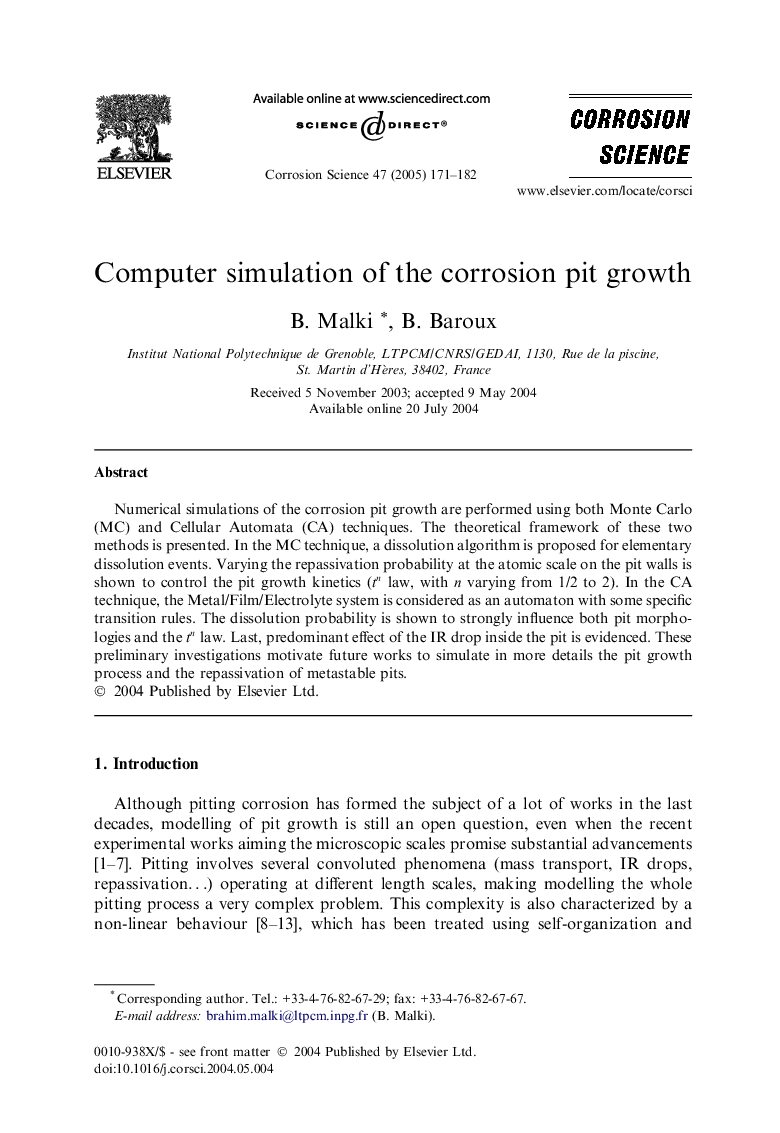| Article ID | Journal | Published Year | Pages | File Type |
|---|---|---|---|---|
| 10628616 | Corrosion Science | 2005 | 12 Pages |
Abstract
Numerical simulations of the corrosion pit growth are performed using both Monte Carlo (MC) and Cellular Automata (CA) techniques. The theoretical framework of these two methods is presented. In the MC technique, a dissolution algorithm is proposed for elementary dissolution events. Varying the repassivation probability at the atomic scale on the pit walls is shown to control the pit growth kinetics (tn law, with n varying from 1/2 to 2). In the CA technique, the Metal/Film/Electrolyte system is considered as an automaton with some specific transition rules. The dissolution probability is shown to strongly influence both pit morphologies and the tn law. Last, predominant effect of the IR drop inside the pit is evidenced. These preliminary investigations motivate future works to simulate in more details the pit growth process and the repassivation of metastable pits.
Related Topics
Physical Sciences and Engineering
Materials Science
Ceramics and Composites
Authors
B. Malki, B. Baroux,
